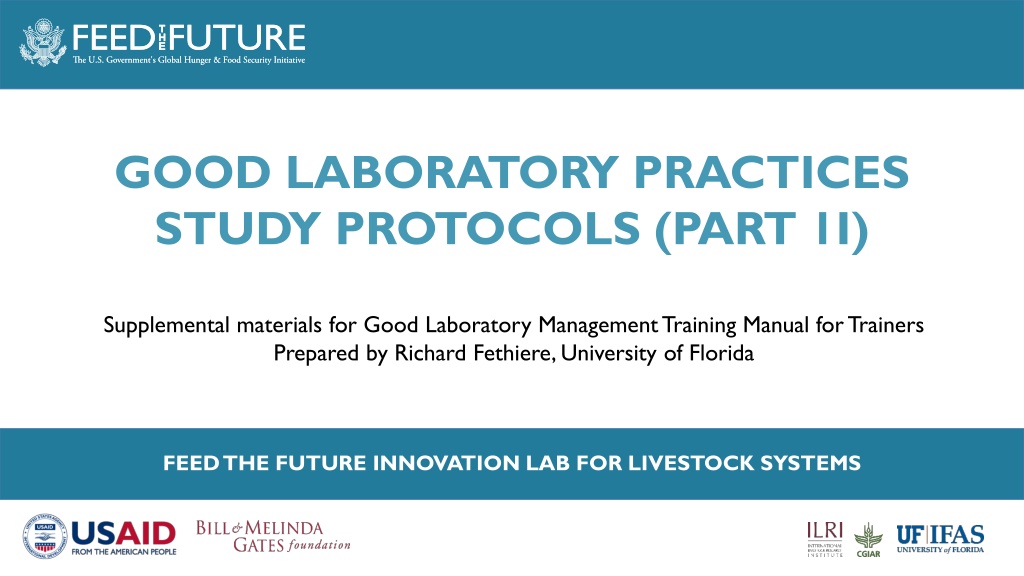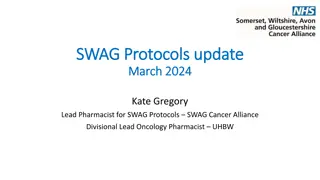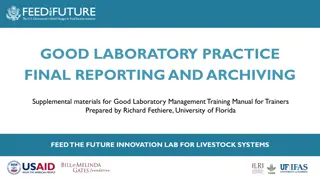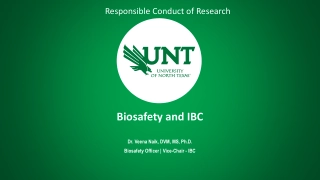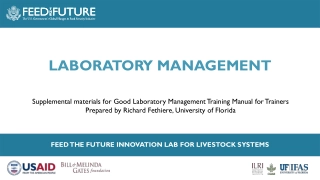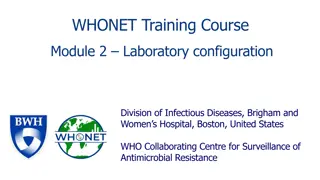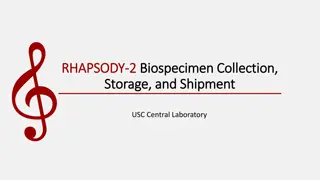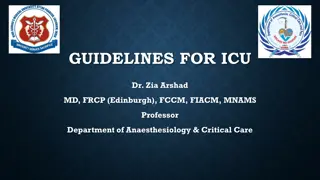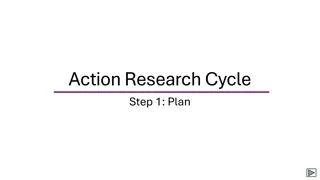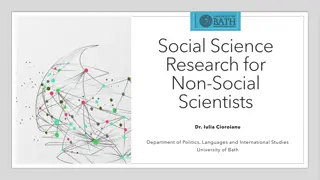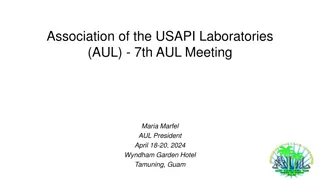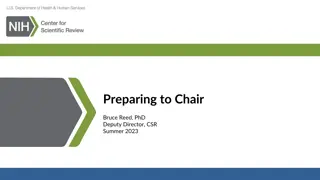Good Laboratory Practices Study Protocols for Effective Research Management
Supplemental materials providing detailed protocols for implementing Good Laboratory Practices (GLP) in research settings. The protocols cover GLP requirements, experimental design, reading regulatory sections, approval processes, amendments, circulation lists, and study plans. These materials aim to ensure adherence to guidelines, regulations, and quality control measures throughout the research process.
Download Presentation
Please find below an Image/Link to download the presentation.
The content on the website is provided AS IS for your information and personal use only. It may not be sold, licensed, or shared on other websites without obtaining consent from the author. Download presentation by click this link. If you encounter any issues during the download, it is possible that the publisher has removed the file from their server.
Presentation Transcript
GOOD LABORATORY PRACTICES STUDY PROTOCOLS (PART 1I) Supplemental materials for Good Laboratory Management Training Manual for Trainers Prepared by Richard Fethiere, University of Florida FEED THE FUTURE INNOVATION LAB FOR LIVESTOCK SYSTEMS Photo Credit Goes Here
Protocol: GLP requirements Protocol: Approval process Background Amendments Study plan Standard Operating Procedures (SOP)
PROTOCOL: GLP REQUIREMENTS Test System Description: Species, strain, health status Age, weight, source Environmental conditions, husbandry Diet, source, and possible contaminants Justification of choice Guidelines, regulations Background data
PROTOCOL: GLP REQUIREMENTS Experimental Design (depending on the study) Dosing details: levels and frequency Vehicles Preparation Quality Control (QC) Animal randomization Pre-test During study/cages/racks
READING: SECTIONS 8.1 AND 8.2 OF THE OECD REGULATIONS
PROTOCOL: APPROVAL PROCESS Approval/Review Approved and dated by Study Director before study starts Allow time for protocol review by Quality Assurance (QA) unit Allow time for corrections Allow time for distribution to study staff Allow time for pre-study meeting
AMENDMENTS Main elements Study/protocol identification and unique issue number Clear description of change & sections changed Amendments are only used for planned changes to the study. Reason for change Approval by Study Director Review process Circulated to all staff who received the protocol
AMENDMENTS Protocol circulation list Study Director Tech in charge Sponsor Animal husbandry Management (research director) Analytical lab Necropsy Main file Pathology Archives Statistician Quality Assurance unit
STUDY PLAN Study Time Plan (Rules #115) on Excel with dates Signs Animals reception Feed consumption Acclimation Bodyweight Randomization Blood chemistry Formulation and dosing Urine analysis Analyses of formulations Necropsy
STANDARD OPERATING PROCEDURES (SOP) Written detailed instructions Cover all lab activities Provides an in-depth description of who does what, when, where, and how
STANDARD OPERATING PROCEDURES (SOP) For successful SOP implementation Management must develop an SOP culture Must train on SOP Must manage SOP system
STANDARD OPERATING PROCEDURES (SOP) System characteristics Part of lab master documentation system Cover all activities Administration/personnel management Safety/hygiene Technical Readable, clear, precise, practical Fully understood and followed
STANDARD OPERATING PROCEDURES (SOP) System characteristics Responsible person for each SOP Immediately available Formal change control Central organization around SOP (Quality Assurance)
STANDARD OPERATING PROCEDURES (SOP) Centralized organization - roles Set standard format imposed Be single point of contact for identification numbers (ID)/ Numbers/Issuance Manage changes (versions): Traceability Ensure distribution / destruction Ensure cross-departmental coherence of SOP Review by Quality Assurance Unit
STANDARD OPERATING PROCEDURES (SOP) Sections in SOP should be standardized e.g. Title Purpose General Highlights principal features Provides background information Procedure Instructions in logical/chronological order References and help Whom to contact in case of encountering issues
ACTIVITY: BRAINSTROMING AND SOP DISCUSSION
STANDARD OPERATING PROCEDURES (SOP) Benefits from a good SOP system Standardized, consistent procedures, reduce test-to-test variability Means of study reconstruction Optimize the way of doing things Record technical and administrative improvements
STANDARD OPERATING PROCEDURES (SOP) Benefits from a good SOP system Approval by management formalizes their commitment to quality Ease of documenting complicated techniques Continuity in case of personnel turnover Forms training manual Means of communication (e.g., during audits, visits, technology transfer)
STANDARD OPERATING PROCEDURES (SOP) Benefits from a good SOP system Different ways to present an SOP Important to register the date of adoption of the SOP necessary for traceability In Europe, the Quality Assurance Unit signs the SOP (not necessary everywhere)
Consult the Good Laboratory Management Training Manual for Trainers https://livestocklab.ifas.ufl.edu/resources/glp/ Direct link to manual in PDF: https://livestocklab.ifas.ufl.edu/media/livestocklabifasufledu/pdf- /MANUAL-Fethiere_UF_Good-lab-management-practices_2022.pdf
Feed the Future Innovation Lab for Livestock Systems https://livestocklab.ifas.ufl.edu/ (Subscribe to newsletter) livestock-lab@ufl.edu Disclaimer This work was funded by the United States Agency for International Development (USAID) Bureau for Food Security under Agreement #AID-OAA-L-15-00003 as part of Feed the Future Innovation Lab for Livestock Systems, and by the Bill & Melinda Gates Foundation OPP#1175487. Any opinions, findings, conclusions, or recommendations expressed here are those of the authors alone.
